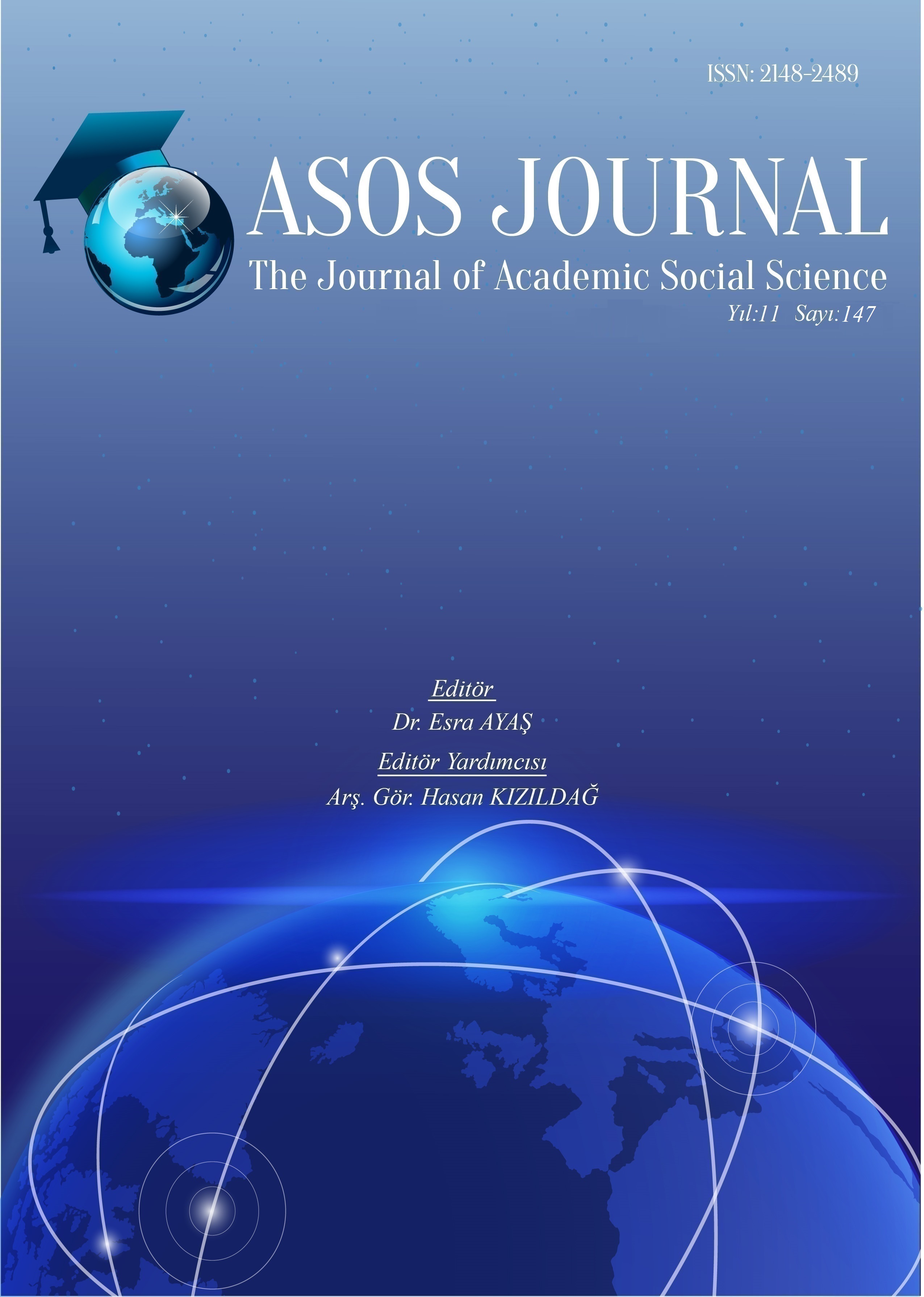OSMANLI DEVLETİ’NİN SON DÖNEMİNDE ÇÖKÜŞÜ DURDURMAK ÜZERE ORTAYA ÇIKAN FİKİR AKIMLARI VE BU AKIMLARIN CUMHURİYET’E ETKİLERİ
Author :
Abstract
Reform, Rönesans ve Sanayi Devrimi süreçlerini yaşayan Avrupa’da, güçlü devletler ortaya çıkarken, Osmanlı Devleti bu gelişmelere ayak uyduramadığından geri kalmıştır. Osmanlı, sanayileşen bu devletlerin hem hammadde kaynağı hem de tüketim fazlası malları için pazar olarak hedefi haline gelmiştir. Osmanlı idarecilerinin hedef halinden kurtulmak ve toprak bütünlüğünü koruyabilmek için buldukları ilk çare, Batı’daki gelişmeleri ülkeye taşıyarak Avrupa’yı yakalamaktır. Bunun bir sonucu olarak, Batılılaşma düşüncesi benimsenmiştir. Ancak, Batı’dan alınanlar büyük oranda askeri alanla sınırlı kaldığı için beklenen netice ortaya çıkmamıştır. Osmanlıyı zayıflatmak isteyen Avrupalı devletler boş durmamış, ilk olarak tebaa içinde yer alan gayrimüslim unsurlar ayrılıkçı taleplerle devlete karşı harekete geçirilmiştir. Ayrılıkçı hareketlere engel olmak amacıyla, Osmanlıcılık fikrinden neşet eden ve tebaa eşitliğini ön gören “Osmanlı Milleti” anlayışı benimsenmiştir. Fakat bir taraftan milliyetçilik akımın etkisinde kalan, bir taraftan da Avrupalı devletlerin desteğini alan gayrimüslim unsurlar, devletten ayrılma düşüncesinden vaz geçmeyince, Osmanlıcık siyaseti sonuç vermemiştir. Bunun üzerine, en azından Müslüman tebaayı devletin çatısı altında tutabilmek düşüncesiyle Sultan II. Abdülhamit tarafından İslamcılık politikası uygulamaya konulmuştur. Ancak, I. Dünya Savaşı sırasında ortaya çıkan manzara, İslamcılık siyasetinin de sonu olmuştur. Bundan sonra, biraz da zorunlu tek siyasi seçenek, ideoloji olarak mevcut olan Türkçülük olmuştur. Milli Mücadele’nin başat fikri olan Türkçülük, Cumhuriyetin kuruluş sürecinde kültürel değerler açısından belirleyici olurken, Batıcılıkta medeniyet inşası noktasında etkili olmuştur.
Keywords
Abstract
While powerful states emerged in Europe, which experienced the processes of Reform, Renaissance and Industrial Revolution, the Ottoman Empire lagged behind because it could not keep up with these developments. The Ottoman Empire became a target for these industrializing states both as a source of raw materials and as a market for their surplus goods. The first remedy the Ottoman rulers found in order to get rid of their target status and preserve their territorial integrity was to catch up with Europe by bringing the developments in the West to the country. As a result, the idea of Westernization was adopted. However, since the purchases from the West were largely limited to the military sphere, the expected results did not materialize. The European states, which wanted to weaken the Ottoman Empire, did not stand idle, and first of all, the non-Muslim elements within the subjects were mobilized against the state with separatist demands. In order to prevent separatist movements, the concept of the "Ottoman Nation", which emerged from the idea of Ottomanism and envisaged the equality of subjects, was adopted. However, when non-Muslims, who were influenced by the nationalist movement on the one hand and supported by European states on the other, did not give up the idea of secession from the state, the Ottoman policy did not yield results. In response, the policy of Islamism was put into practice by Sultan Abdülhamid II with the idea of at least keeping the Muslim subjects under the umbrella of the state. However, the scene that emerged during World War I marked the end of the politics of Islamism. After that, the only political option, somewhat by necessity, was Turkism, which was available as an ideology. While Turkism, the dominant idea of the National Struggle, was decisive in terms of cultural values in the process of the establishment of the Republic, Westernism was effective in the construction of civilization.





